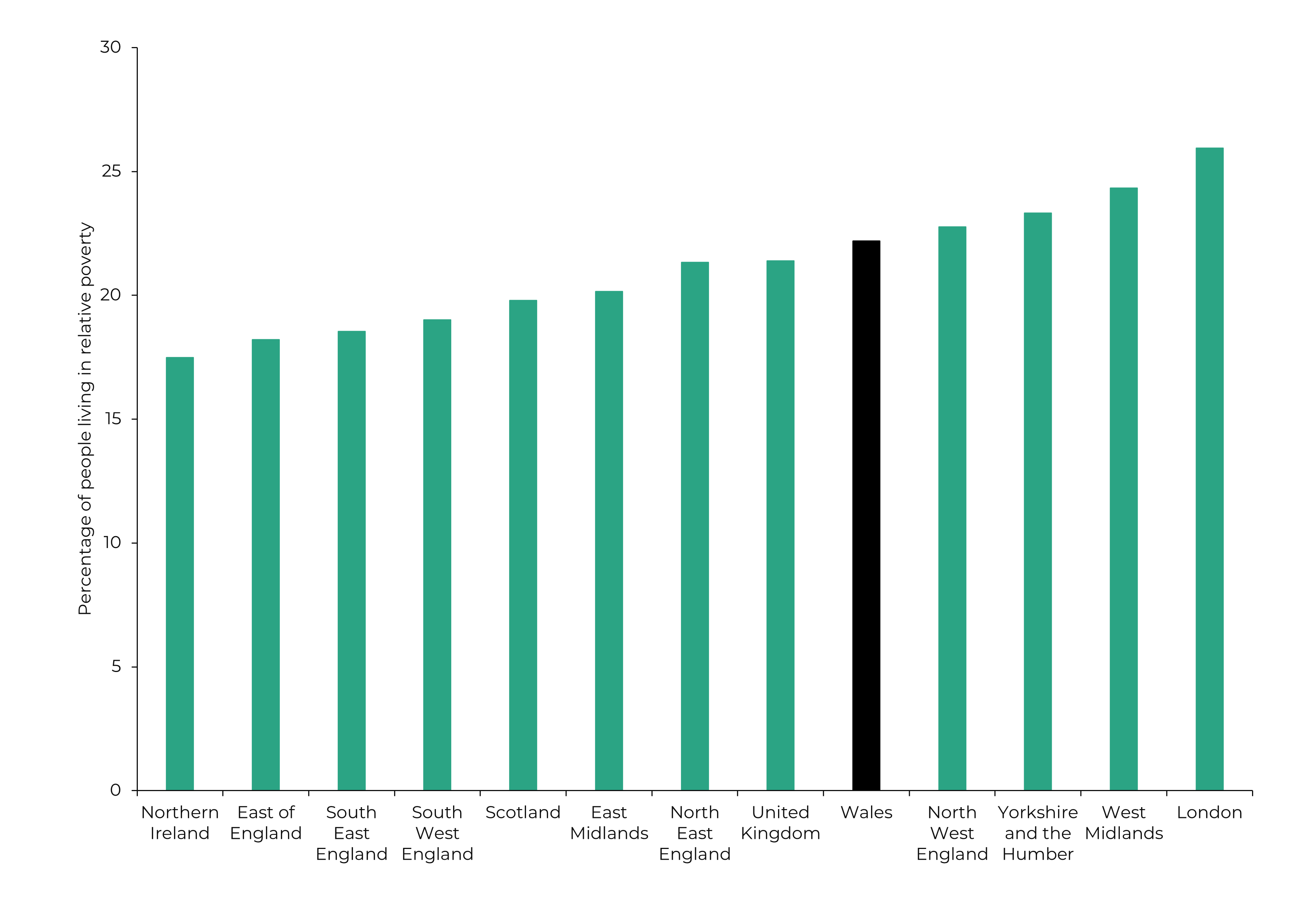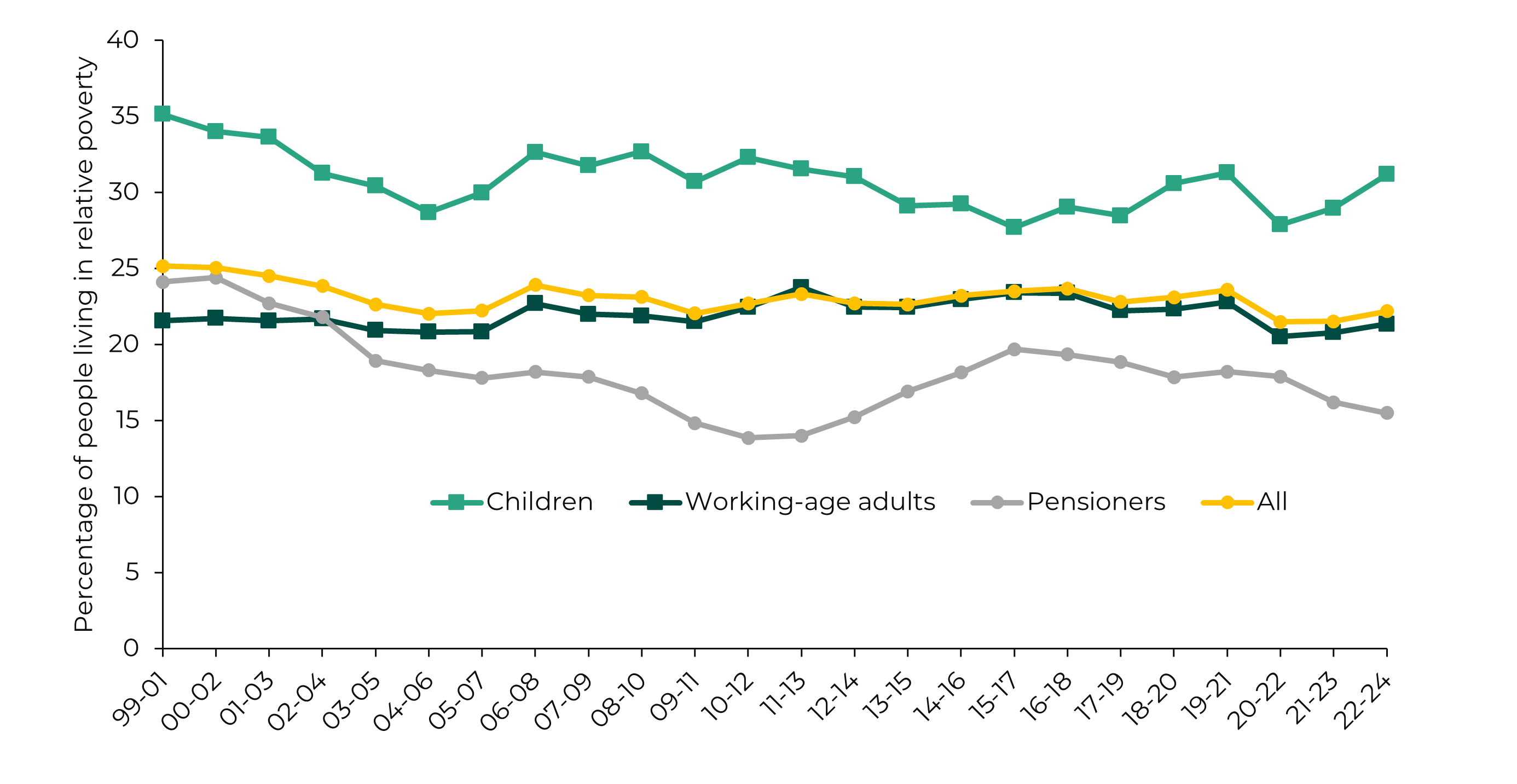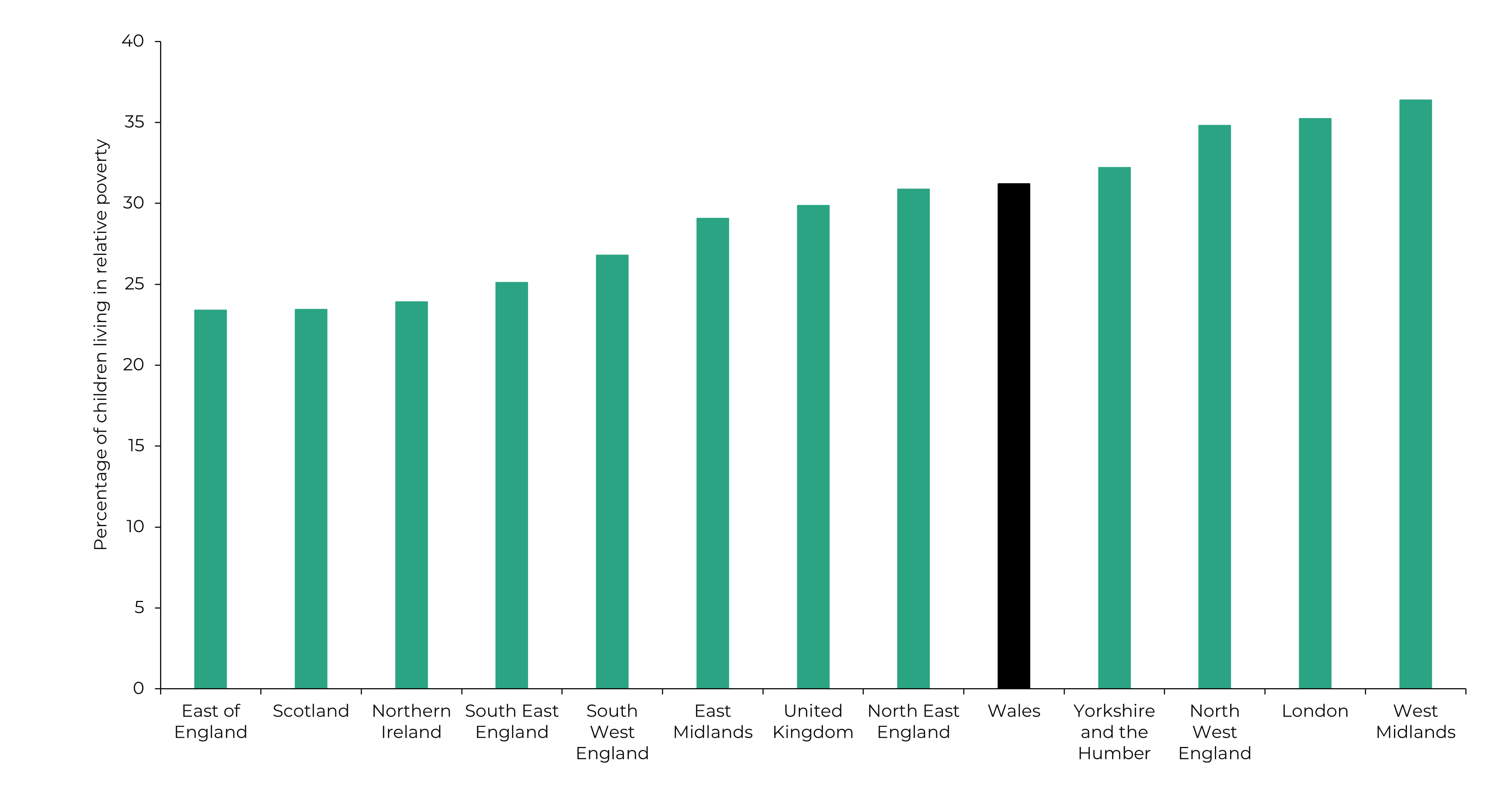Last month the latest Households Below Average Income figures were released, with the Bevan Foundation describing the findings as “another set of disappointing data showing no progress is being made in reducing poverty”.
Our article sets out who’s most likely to be in poverty, what the Welsh and UK governments are doing to tackle poverty, and what alternative policy options are available to them.
We’ve covered the impact of reforms to disability benefits in a separate article, published earlier today.
Who is most likely to live in poverty in Wales?
|
The main way poverty is counted in the UK (and internationally) is the ‘relative poverty’ measure. A person is considered to be in relative poverty if their total household income after tax, national insurance and other deductions falls below 60% of the UK median (which is the middle value in a list of numbers that have been arranged from smallest to largest). |
The latest figures from the Department for Work and Pensions show 22% of people in Wales live in relative poverty after housing costs, slightly above the UK average and higher than figures for Scotland and Northern Ireland.
Figure 1: Percentage of people in devolved nations and English regions living in relative poverty after housing costs, 2021-22 to 2023-24

Source: Department for Work and Pensions, Households below average income: for financial years ending 1995 to 2024
Wales’s poverty rate has changed little over time. Since the start of devolution, children in Wales have been more likely to live in poverty than other age groups. For most of this period, pensioners have been the age group least likely to live in poverty. The latest figures show 31% of children in Wales live in poverty, slightly above the UK average and somewhat higher than in Scotland (23%) and Northern Ireland (24%).
Figure 2: Percentage of people living in relative poverty after housing costs by age group, Wales

Source: Department for Work and Pensions, Households below average income: for financial years ending 1995 to 2024
Note: The years in this graph relate to financial years – i.e. 22-24 means the 2021-22 to 2023-24 financial years
Figure 3: Percentage of children in devolved nations and English regions living in relative poverty after housing costs, 2021-22 to 2023-24

Source: Department for Work and Pensions, Households below average income: for financial years ending 1995 to 2024
The Institute for Fiscal Studies (IFS) highlights that, while this is the best quality data available to measure poverty, it may not be as reliable as in previous years. For example, while the most recent data reports a real-terms fall in earnings, the IFS says potentially more accurate HMRC tax data suggests earnings remained relatively similar.
Which government does what, and how are they tackling poverty?
Both the UK and Welsh governments have levers to tackle poverty. The UK Government makes the vast majority of decisions around tax, social security, and employment law. The Welsh Government uses policy and financial levers within its devolved powers to tackle poverty.
The Welsh Government says it has spent £5 billion to tackle poverty over the last few years. Its main initiatives to tackle poverty include:
- Providing emergency assistance grants, and grants for essentials like furniture and washing machines and to households through the Discretionary Assistance Fund.
- Introducing Universal Free School Meals for primary school children from September 2024.
- Working to develop a ‘Welsh Benefits System’ which makes it easier to access the different grants the Welsh Government provides to low-income households.
- Funding independent and free social welfare information and advice through the Single Advice Fund.
The UK Government believes that economic growth will enable rising living standards for all. Its Make Work Pay plan is a key part of this, and aims to tackle low pay, poor working conditions, and insecure work. As part of this plan, the UK Government introduced the Employment Rights Bill and increased statutory minimum wages, and will introduce further measures to improve employment rights and promote equality at work.
The UK Government also established a child poverty taskforce, which is currently developing a UK Child Poverty Strategy to be published this spring. The taskforce will use a number of levers to try to reduce child poverty, including lowering costs, supporting households to increase their income and considering social security reforms to support people into work and alleviate poverty.
What more needs to be done?
While some stakeholders say the Welsh Government’s child poverty strategy focuses on the right priorities, there has also been criticism of its approach to tackling poverty. The Children’s Commissioner and a number of other organisations are “deeply disappointed” the Welsh Government has not developed a robust action plan with measurable targets to reduce child poverty. Oxfam Cymru has called for the Welsh Government to develop an anti-poverty strategy and establish a Poverty and Inequality Commission. Looking at specific policies, the Senedd’s Equality and Social Justice Committee found that investment in the Warm Homes Programme “is nowhere near what is required to match the scale of the challenge of ending fuel poverty”. The Bevan Foundation says recent childcare costs data shows “just how much more work needs to be undertaken to ensure that Wales’ childcare system tackles rather than exacerbates poverty and inequality.”
Social security is a critical lever in reducing poverty, with the Joseph Rowntree Foundation arguing economic and employment growth are insufficient to reduce poverty. There have been calls for the UK Government to remove the two-child benefit limit, which prevents parents from claiming Universal Credit or Child Tax Credit for more than two children born after 6 April 2017. This affects more than 65,000 children in Wales, 11% of all children. The Cabinet Secretary for Social Justice has raised the need to address the two-child limit “at every single child poverty four nations taskforce”. The IFS has described removing the two-child limit as “the single most cost-effective policy for reducing the number of children living below the poverty line”. The Resolution Foundation has said that keeping it is “incompatible with a credible Child Poverty Strategy”.
The Scottish Government has announced it will use its social security powers to mitigate the two-child limit from 2026. It has also introduced the Scottish Child Payment, which is a payment of £27.15 per week per child under 16 made to families who receive specified benefits. The Scottish Government estimates the payment will reduce child poverty in Scotland by 4 percentage points in 2025-26.
The Welsh Government doesn’t have the powers to introduce a similar payment permanently. However, it is working with the Scottish Government to “better understand the fiscal, legislative and other resources” needed to deliver such a payment. The Bevan Foundation said the Welsh Government either “decides that the need to reduce child poverty trumps the current devolution settlement”, and seeks additional powers and funding, or it accepts that the current approach to social security will lead to increased poverty.
Poverty has been a long-standing challenge faced by every Welsh Government since devolution began. However, the Welsh Government is now facing particularly strong headwinds - the Joseph Rowntree Foundation forecasts that Wales will have the highest poverty and child poverty rates of the UK nations in 2029 without further action.
Article by Gareth Thomas, Senedd Research, Welsh Parliament






